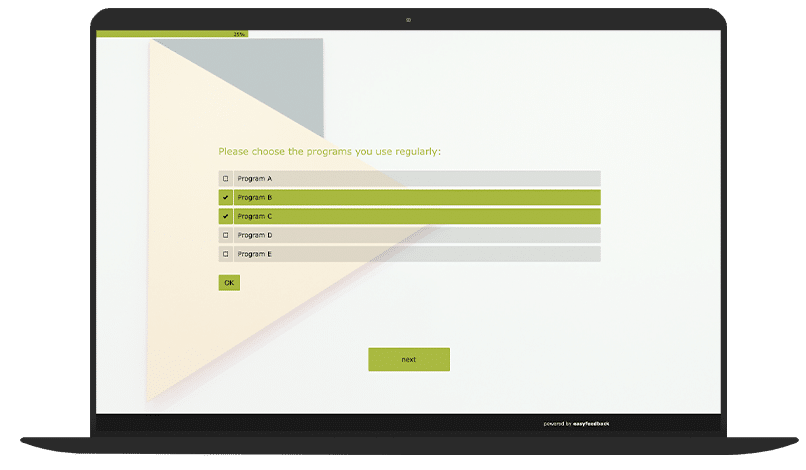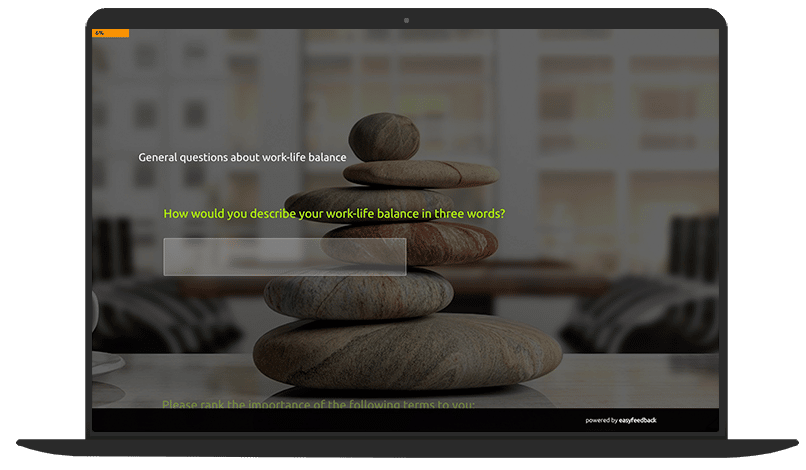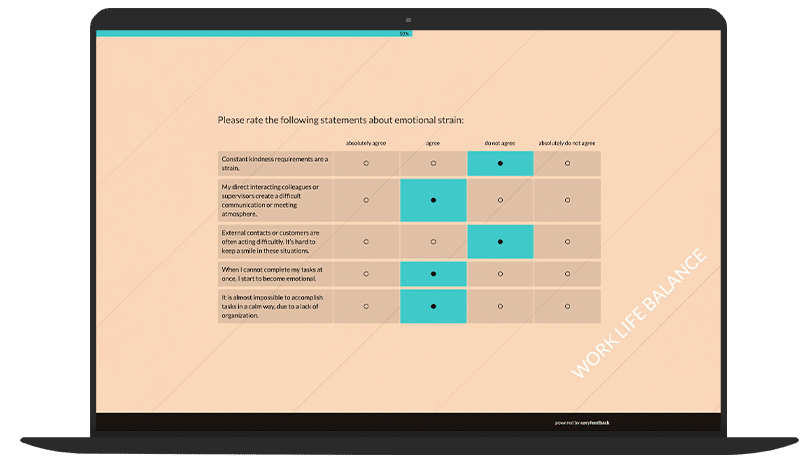Method 1: Give recognition and praise
• Public recognition in front of the team or during staff meetings
Publicly recognizing employees is a powerful way to highlight their achievements.
Recognizing them in front of the entire team or in formal staff meetings not only acknowledges individual performance, but also reinforces a sense of belonging.

• Awards or certificates for outstanding performance
Presenting awards or certificates for special achievements highlights outstanding contributions and creates a lasting memory of the employee’s successes.
This is not just a symbolic gesture, but also a tangible recognition of their dedication and excellence.
• Personal praise for good work
Personal recognition in the form of praise for good work is a simple but effective way to increase employee motivation.
Personal words of recognition show appreciation for the individual’s contribution and encourages continued excellence.
This creates a positive working environment where everyone feels valued and motivated to do their best.
Method 2: Offer development opportunities
• Further education, training and workshops for personal and professional development
Promoting training, education and workshops is more than just an investment in skills; it is a recognition of each employee’s individual potential.
By providing opportunities for personal and professional development, the company not only signals its appreciation, but also enables employees to continuously improve and stay at the cutting edge of the industry.

• Career development opportunities within the company
The prospect of career advancement and development within the company is a powerful motivator. Employees who see clear career paths are inclined to make a long-term commitment.
Providing clear development opportunities, whether in the form of promotions, project responsibilities or interdisciplinary tasks, not only promotes individual motivation, but also strengthens confidence in long-term commitment to the company.
• Mentorship programs in which experienced employees share their knowledge
Experienced employees can share their insights, experiences and best practices, which not only increases the professional competence of the mentees, but also fosters a supportive community within the company.
The valuable exchange of experiences creates a positive atmosphere of learning and growth.

Method 3: Promote flexibility and work-life balance
• Flexible working hours or the option to work from home
Enabling flexible working hours or the option of working from home underlines the company’s understanding of the diverse life circumstances of its employees.
This flexibility enables team members to reconcile their work with personal commitments and thus promotes not only work-life balance, but also trust and satisfaction in the workplace.

• Support with childcare
Balancing work and family life is of great importance to many employees.
Providing childcare support, whether through subsidies, recommendations for local facilities or flexible childcare options, demonstrates the company’s commitment to the wellbeing of its employees and creates a supportive environment.
• Promote vacation days and respite breaks
Promoting vacation days and recovery breaks is essential for the long-term performance of employees.

A good work-life balance not only contributes to physical and mental health, but also increases productivity when employees return to work.
Emphasizing the importance of recovery signals that the company considers the well-being of its employees a priority and creates a culture of mindfulness and balance.
Method 4: Offer financial incentives
• Bonus programs for outstanding performance
Introducing bonus programs for outstanding performance is not only a recognition of hard work, but also an incentive for employees to use their best skills.
By clearly linking individual success to financial rewards, the company not only creates a motivating work culture, but also fosters a healthy competitive atmosphere that inspires employees to constantly strive for excellence.

• Profit sharing or share options
The prospect of profit sharing or the opportunity to purchase stock options directly connects employees to the company’s success.
This model not only creates a shared vision, but also rewards employees for their role in increasing the value of the company.
It promotes a sense of shared responsibility and strengthens employees’ commitment to the long-term success of the company.
• Competitions with cash or non-cash prizes
Organizing competitions, whether for innovative ideas, sales targets or team performance, not only brings fun into the work environment, but also creates additional incentives for excellence.
The prospect of cash or non-cash prizes not only rewards the winners, but inspires the entire team to collectively strive for higher goals.
Such competitions promote a positive competitive culture and strengthen cohesion within the team.
Method 5: Promote team-building activities
• Joint team events, excursions or retreats
Organizing joint team events, excursions or retreats not only offers a welcome break from the daily work routine, but also promotes team spirit.
Shared experiences outside the office not only create lasting memories, but also strengthen bonds and create new connections.
Such events create a positive and informal environment that encourages collaboration and deepens the sense of team togetherness.
• Team building games and activities to strengthen team bonding
The use of targeted team building games and activities helps to improve trust and communication within the team.
These playful interventions not only promote cooperation, but also provide space for creativity and the development of joint solutions.
The strengthened sense of team togetherness contributes to a positive working atmosphere in the long term.
• Joint celebrations and events
Organizing joint celebrations and events, be it a birthday, a company anniversary or a moment of success, provides an opportunity to celebrate and strengthen social ties.

Such moments of joy and shared recognition not only create positive memories, but also promote a feeling of appreciation.
Joint celebrations and events help employees to feel part of a larger community and celebrate their successes together.
Method 6: Promote clear communication and transparency
• Hold regular meetings to discuss the company’s goals
Holding regular meetings to discuss the company’s goals creates a valuable platform for the exchange of ideas and alignment of all team members.
These meetings not only provide an opportunity to clarify company goals, but also encourage open dialog about current challenges and opportunities.
Transparent communication creates a shared understanding of the company’s direction and allows everyone to play an active role in achieving these goals.
• Open communication about company developments
Open and transparent communication about company developments creates an environment of trust and shared direction.
Employees who are regularly informed about changes, successes and challenges not only feel more integrated into the corporate culture, but also understand the broader context of their work.
This openness not only promotes commitment, but also strengthens trust in management.
• Involving employees in decision-making processes
Involving employees in decision-making processes gives each individual the feeling that their contribution and opinion count.
Whether in the development of new strategies, the introduction of new projects or the optimization of work processes – the active involvement of the workforce not only creates innovative solutions, but also promotes a sense of shared responsibility.
Employees who are involved in the decision-making process identify more strongly with the decisions made and feel an integral part of the company’s success.
Method 7: Design of the working environment
• Ergonomic office furniture and a pleasant working atmosphere
The provision of ergonomic office furniture and the creation of a pleasant working atmosphere are decisive factors for the well-being of employees.
Targeted investment in ergonomic furniture not only supports physical health, but also promotes productivity.
A pleasant working atmosphere that takes aspects such as light, space and color into account creates an inspiring place where employees enjoy developing their creative potential.
• Promoting creativity and innovation through inspiring spaces
Creating inspiring workspaces is an essential building block for promoting creativity and innovation.
An environment that is both visually appealing and functional encourages employees to come up with new ideas and solutions.
The integration of inspiring elements, such as art, plants or creative workspaces, helps to make the workplace more than just a room – it becomes a place that encourages creative development.

• Technological equipment that makes work easier
Providing modern and efficient technology not only makes employees’ work easier, but also demonstrates the company’s commitment to innovation and progress.
A contemporary technological environment enables employees to perform their tasks more effectively, encourages collaboration and helps them to keep up to date with industry-specific developments.
Investing in advanced technologies is therefore not only an operational necessity, but also a clear sign of appreciation towards employees.
Method 8: Health promotion
• Health programs, such as fitness classes or nutritional advice
The implementation of health programs that include fitness classes and nutritional advice underlines the company’s understanding of the holistic health of its employees.
Access to fitness facilities and qualified nutritionists enables employees to strengthen their physical health.
These programs not only promote a healthy lifestyle, but also create a positive corporate culture that focuses on employee well-being.
• Support in the prevention of stress and burnout
Support in the prevention of stress and burnout demonstrates the company’s commitment to the mental well-being of its employees.

This can include targeted measures such as stress management training, relaxation techniques and the promotion of a healthy work-life balance.
Organizing a supportive environment that promotes individual stress management helps to create a sustainable and healthy working atmosphere.

• Health care and prevention
The provision of comprehensive healthcare and preventative services demonstrates the company’s care for the well-being of its employees.
This can include access to health insurance, health checks and preventative measures.
Prioritizing healthcare and preventative care not only signals a sense of responsibility, but also strengthens employees’ confidence in their long-term commitment to the company.
A healthy team is a productive team, and this investment in health pays off not only individually but also for the company as a whole.
Method 9: Promote trust and autonomy
• Delegation of responsibilities and tasks
The targeted delegation of responsibilities and tasks is more than just an organizational necessity; it is an expression of the company’s trust in the abilities of its employees.
Delegating areas of responsibility not only promotes individual strengths, but also creates a feeling of appreciation.
Employees who are given responsibilities not only feel an integral part of the team, but are also encouraged to develop their skills and expertise.
• Trust in the skills of employees
A fundamental element for a motivated workforce is the company’s trust in the individual skills of its employees.
This trust is reflected not only in delegation, but also in the recognition of individual contributions to the company’s success.
Promoting personal responsibility and creating space for individual development not only strengthens employees’ self-confidence, but also contributes to the creation of a dynamic and high-performance work culture.

• Autonomy in the organization of work
Giving employees autonomy to organize their work allows them to accomplish their tasks in their own way.
This freedom not only encourages creativity and innovation, but also allows employees to adapt their way of working to their personal strengths and preferences.
Autonomy in work design creates an environment in which individual work styles are valued, which in turn strengthens self-motivation and commitment to tasks.
Method 10: Goals and feedback
• Clear objectives and expectations
Setting clear objectives and expectations is the cornerstone of successful collaboration.
Clear and transparently communicated goals not only give employees orientation, but also create a clear framework for their work.
Understanding the individual’s role in the wider corporate context not only promotes a sense of purpose, but also creates a feeling of importance and relevance.
• Regular feedback meetings to assess performance
Conducting regular feedback meetings is essential for the continuous development of employees.
These meetings not only offer the opportunity to assess performance, but also promote open dialog between employees and managers.
Constructive feedback not only strengthens individual development, but also helps to improve collaboration and create a supportive work culture.

• Adjustment of targets according to individual skills and career goals
Adapting objectives to individual skills and career goals shows the company’s interest in the personal and professional development of its employees.
By tailoring goals to individual strengths and ambitions, not only is each employee’s potential maximized, but long-term loyalty to the company is created.
This tailored approach to goal setting not only boosts motivation, but also supports the development of a diverse and highly skilled workforce.
Conclusion: Invest in the motivation of your employees for a sustainable future
In conclusion, I would like to emphasize that motivating employees is far more than a mere management task – it is a decisive determinant of a company’s success.
The ten examples and methods presented show that motivation is not limited to a simple strategy, but requires a diverse and individual approach.
From recognition and training opportunities to creating a supportive work environment, each element plays a critical role in fostering employee engagement, creativity and long-term retention.
The emphasis on transparent communication, individual appreciation and the involvement of employees in decision-making processes underlines the importance of an open corporate culture.
The promotion of health and well-being shows that successful organizations not only focus on professional performance, but also on the well-being of the people who drive the company’s success.
Overall, this article serves as a guide for managers and HR managers who want to create a motivating work environment.
By applying these diverse methods, companies can not only increase productivity, but also establish a positive corporate culture. Employees then not only work, but can develop their full potential.
The art of employee motivation is therefore not only an investment in the present, but also in the sustainable future of every company.
More on the topic of employee motivation
- Everything you need to know about employee motivation!
- How can you measure the motivation of your employees
- 10 tips for increasing employee motivation
- 6 Consequences of a lack of employee motivation
- Employee motivation through leadership: approaches and strategies
- Motivational skills for entrepreneurs and managers: The engine for sustainable success







